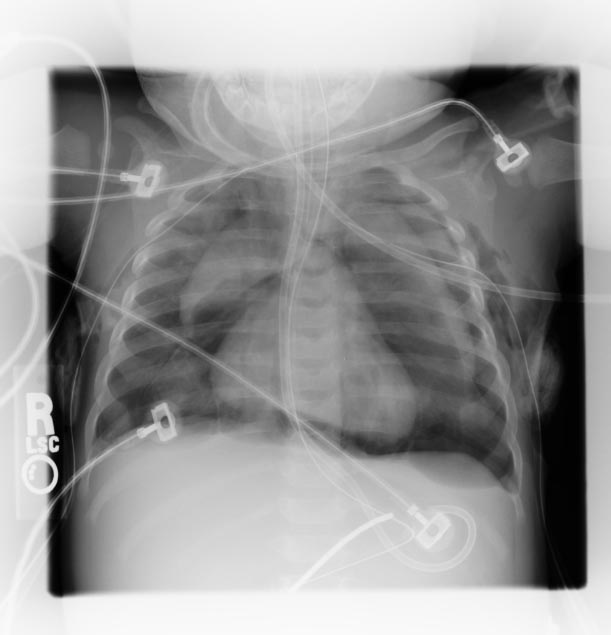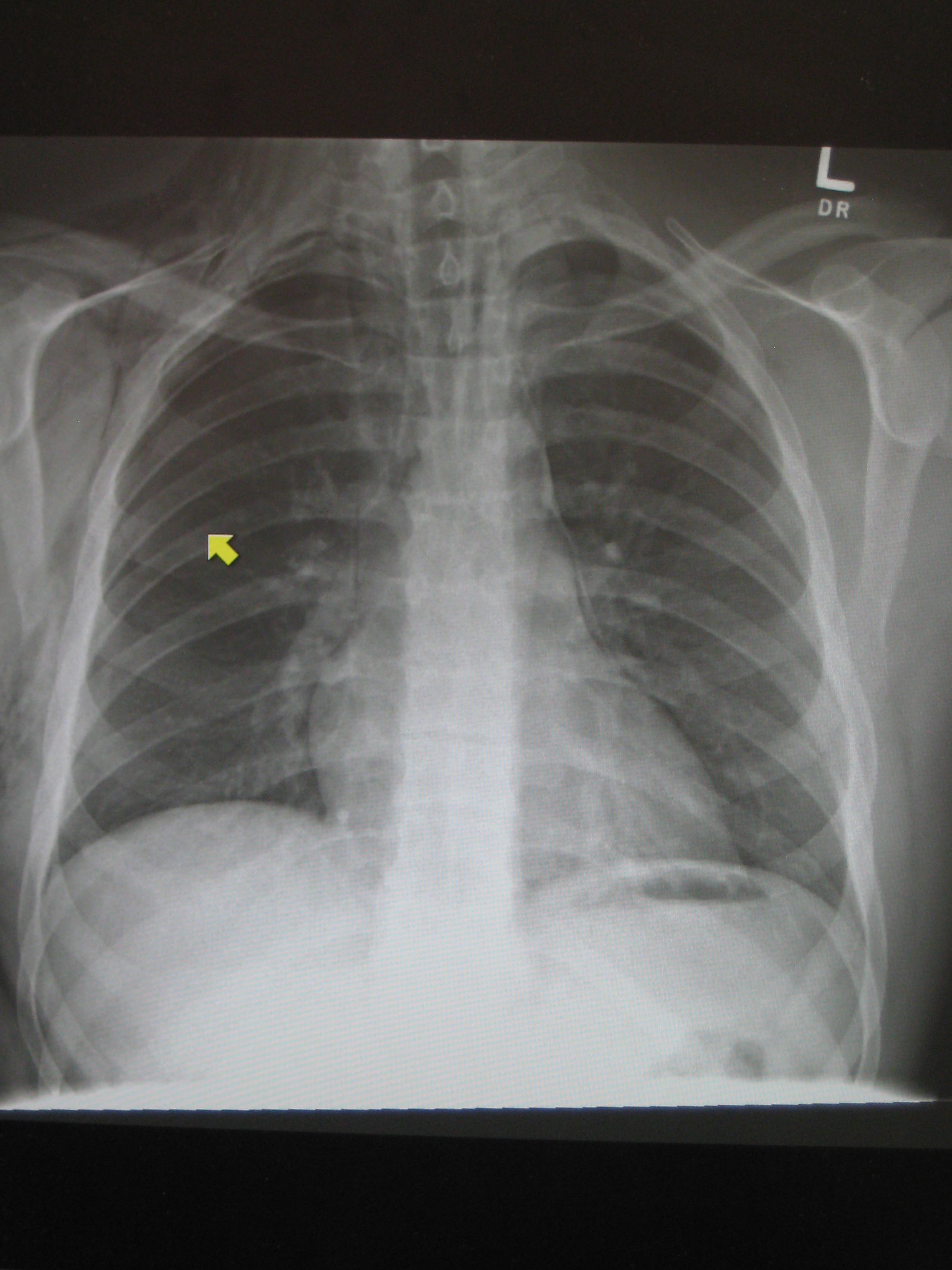Pneumomediastinum chest x ray
|
Pneumomediastinum Microchapters |
|
Diagnosis |
|---|
|
Treatment |
|
Case Studies |
|
Pneumomediastinum chest x ray On the Web |
|
American Roentgen Ray Society Images of Pneumomediastinum chest x ray |
|
Risk calculators and risk factors for Pneumomediastinum chest x ray |
Editor-In-Chief: C. Michael Gibson, M.S., M.D. [1] Associate Editor(s)-in-Chief: Trusha Tank, M.D.[2]
Overview
The diagnosis can be confirmed via chest X-ray showing a radiolucent outline around the heart and mediastinum or via CT scanning of the thorax. The presence of air within the connective tissue planes of the mediastinum can be seen on chest X-ray.
Chest X Ray
The following radiological finding(s) are associated with pneumomediastinum:[1][2][3][4][5][6][7]
- Subcutaneous emphysema
- Naclerio V sign
- Seen in pneumomediastinum occurring often secondary to an oesophageal rupture but it is not entirely specific to that condition.
- Pneumopericardium
- Gas anterior to pericardium
- Ring around artery sign
- Gas around pulmonary artery and main branches
- Tubular artery sign
- Gas outlining major aortic branches
- Double bronchial wall sign
- Gas outlining bronchial wall
- Continuous diaphragm sign
- Gas trapped posterior to pericardium
- Extrapleural sign
- Gas between parietal pleura and diaphragm
- Gas in pulmonary ligament
Pediatric pneumomediastinum has different appearances:
- Thymic wing sign
- Elevated thymus
- Haystack sign (the heart appears like a haystack in a Monet painting)
- Gas crossing the superior mediastinum
-
Pneumomediastinum: Spinnaker sail sign (Image courtesy of RadsWiki)
-
Pneumomediastinum and right sided pneumothorax post first rib fracture in a mountain biking accident.
References
- ↑ Taveras, J., & Ferrucci, J. (1986). Radiology. Diagnosis/imaging/intervention. 5 volumes. Annual revision service. R. Health Professions,Philadelphia, PA.
- ↑ Sandler, Carl M.; Llbshltz, Herman I.; Marks, Gerald; Libshitz, Herman I. (1975). "Pneumoperitoneum, Pneumomediastinum and Pneumopericardium Following Dental Extraction". Radiology. 115 (3): 539–540. doi:10.1148/15.3.539. ISSN 0033-8419.
- ↑ Kim, Hye Rin; Yoo, Seung Min; Lee, Hwa Yeon; Han, Jin Hee; Frazier, Aletta A; White, Charles S (2016). "Presence of subpleural pulmonary interstitial emphysema as an indication of single or multiple alveolar ruptures on CT in patients with spontaneous pneumomediastinum". Acta Radiologica. 57 (12): 1483–1489. doi:10.1177/0284185116629830. ISSN 0284-1851.
- ↑ Moseley, John E. (1960). "Loculated Pneumomediastinum in the Newborn". Radiology. 75 (5): 788–790. doi:10.1148/75.5.788. ISSN 0033-8419.
- ↑ Hammond DI (March 1984). "The "ring-around-the-artery" sign in pneumomediastinum". J Can Assoc Radiol. 35 (1): 88–9. PMID 6725378.
- ↑ Levin, Bertram (1973). "The continuous diaphragm sign". Clinical Radiology. 24 (3): 337–338. doi:10.1016/S0009-9260(73)80050-9. ISSN 0009-9260.
- ↑ Lillard, Richard L.; Allen, Parker (1965). "The Extrapleural Air Sign in Pneumomediastinum". Radiology. 85 (6): 1093–1098. doi:10.1148/85.6.1093. ISSN 0033-8419.

